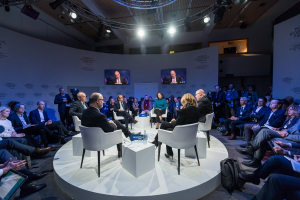
In CareerCast’s annual Jobs Rated report, meeting planning was listed as the 5th most stressful job in the world1.
Of course, this comes as a surprise to most people outside of the industry.
What’s so difficult about setting up a meeting, they think? You make a to-do list, call the right people, and go to the correct venue, right? Wrong.
Imagine attempting to juggle a thousand different responsibilities across a vast spectrum of skill sets, all threatening to change in a moment’s notice, while literally thousands of people judge your job performance in real time. It’s enough to intimidate even the most lionhearted.
As if that wasn’t enough to worry about, unlike most industries, pharmaceutical and life science meeting planners also have to deal with mountains of convoluted regulations that would confuse even the most skilled lawyer.
So, in terms of meeting planning, where along the spectrum of difficulty do HCP and KOL meetings sit?
Unfortunately, for those tasked to plan them, quite high. Skilled HCP’s, KOLs, scientists, and medical academics, some of the smartest and most hardworking people in society, have high requirements and standards.
But fear not, in the following article, we’ll examine in detail from A to Z the most significant dimensions to executing such an occurrence — one that manages to transcend the dullness of the generic and mediocre to rise and become a truly great meeting.
What is a Great HCP and KOL Meeting Anyway?
Before we can assemble a great HCP and KOL meeting, we need to first establish what criteria determines one.
Fortunately, we have some very clear benchmarks that teams can use to determine if they are indeed hosting great HCP and KOL meetings. We know from the best performing teams, that they achieve:
- 85%+ participation in interactive elements (e.g. polls).
- 5+ meaningful interactions (posts, likes, and comments, etc.) per participant per day.
- 4.5 satisfaction score (out of 5).
The average attendee begins forgetting the information they accumulated at a meeting almost the moment they walk out the venue doors, regardless of how significant or intriguing the nature of the academic work discussed. This is because the meeting itself fails to make an impression on them.
Scientific research has shown a strong connection between our emotional state at the time of a meeting and our ability to recall details of it2. Thus, in order to make a truly indelible mark upon an HCP or KOL, we must plan an entire meeting experience that resonates powerfully with them on an emotional level.
In this regard, when attempting to create a memorable spectacle, five immediate pillars define whether it will fail or succeed: the quality of the venue, the agenda, the speakers, the digital engagement and the networking/collaboration experience.
If you’re a life science company looking for the latest HCP engagement trends, check out HCP engagement: emerging trends, success metrics, and omnichannel strategies.
Meeting Best Practices
All truly great meetings are greater than the sum of their parts. That being said, in order to produce such a finished product, you have to have the right strategies in place to first ensure each facet is of the utmost thoughtfulness, creativity, and quality.
1. Venue
Traditionally, HCP and KOL meetings are structured in one of four possible ways as either a conference, congress, medical education, or symposium.
Whereas conferences are composed of activities surrounding a variety of different topics, a congress focuses in-depth on one distinct area or subject. Symposiums are the briefest of the four, a short session within a congress that educates HCPs on a medical topic. Furthermore, a medical education meeting typically lasts 2-3 days and concentrates on upskilling HCP’s with new information on a medical topic/disease by sharing the latest scientific data, case studies, etc.
The structure of your meeting will inevitably determine the size of the venue you’ll need. For example, you can’t hold an enormous conference with tens of thousands of people in a boutique hotel, and you wouldn’t want to plan a satellite symposium on the grounds of a palatial manor.
You’ll need to canvass the city where you’ll be hosting the meeting and deduce how many realistic locations there are that would be suitable for your number of attendees. Don’t be afraid to record a lengthy list as other factors will ultimately winnow down the contenders to a single winner.
Once you have a decent idea of which space would potentially work, we need to factor in other variables:
- How close to nearby hotels are each of the venues?
- Are they conveniently accessible to attendees?
- Will there be any logistical issues, i.e. delivering amenities, setting up equipment, etc?
- If organizing offsite activities, are there any close-by?
- Is the venue, time of year and weather combination suitable?
- Is security or attendee safety going to be a concern for any reason?
- Will the venue be available for the date of your meeting?
- Have you accounted for all extra fees involved in the booking such as safety deposits, regulatory permits, etc?
- Are there any unforeseen legal complications that might arise if you were to book this place?
- Does the venue suit my budget?
As is evident from glancing over this list, it becomes immediately apparent that simply possessing a general idea of what type of venue you want for your meeting won’t cut it.
The good news is that once you’ve eliminated the majority of names on your list and ascertained the most advantageous one, your HCP and KOL meeting will be exponentially more successful.

To discover how to recruit and nurture the best KOLs so they come to speak at your events, check out our blog post the ultimate KOL engagement plan for successful pharma events.
2. Agenda
The bread and butter of any meeting, the agenda is what either draws people in or drives them away. You could book the fanciest venue in the world, serve lobster and steak, and have former presidents presenting, but if the actual topics covered aren’t what people are interested in, it won’t matter.
So, how do you know what people want? Well, the easiest way is to ask them — poll the field, distribute surveys, run focus groups, etc.
Another way is to look at current trends—topics being discussed at universities and academic gatherings, social media, industry publications, highlighted in newly published scientific literature, etc—and decide which of the most popular ones would suit your meeting.
However, more than likely, you already know what you want to discuss. Most scientific congresses are, after all, annual meetings based on a single topic. The question then is not what topic to choose, but how to approach it.
In order to get the agenda right, you really need to put yourself in the shoes of your attendees. What journey would you like them to take? What will they hear and see, that could inspire and excite them? Is there enough room for continuing the discussion after the sessions?
You want to give the attendees enough thoughtful seminars and talks that they are intellectually challenged, but not so much that they become fatigued.
Case in point — don’t line up a row of highly sophisticated lectures by luminaries in the field as there is a limited reservoir of attention and energy even the most brilliant HCPs can call upon at a given time. Instead, carefully spread out the activities that will require greater engagement and intermix them with more relaxed opportunities, such as networking, exhibitions, or snack breaks.
What’s more, the order of your speakers should be taken into account. Do you have all the biggest names presenting on one day? If so, why would anyone stay for the rest of the meeting?
Maintaining and providing an optimal balance of amusement and education should be the overarching goal of your agenda. Similar to the composition of a harmonious melody, there needs to be a well-thought-out push and pull dichotomy when it comes to the effort required for each activity and the anticipated overall interest in each activity.
Once you’ve figured out the right flow for all of your seminars, talks, debates, keynotes, etc, you should customize the meeting by breaking up the opportunities into different tracks based on an attendee’s background — the level of experience in the industry, particular interests of note, etc.
By allowing attendees to self-select the most advantageous course for them, you make the agenda’s UI exponentially more intuitive for them to transition from one activity that perfectly suits them to another.
An added benefit to this approach is the diversity of subjects it brings. If an attendee finds themselves uninterested in their current agenda, they have the freedom to switch to a different one for an entirely different experience.
3. Presenters
Introducing the juncture where meeting planning gets the most complicated and crucial to pull off — finding, recruiting, and managing the best talent possible.
Every day, there are countless numbers of meetings. That means, for the most respected names in any given field, they have a finite amount of time to properly address their field and market themselves. Undoubtedly, the easiest way for them to do this is by simply accepting offers to the largest and most reputable meetings; however, if you aren’t hosting the most famous international gathering around, there are certain ways you can get around this.
The first is by choosing a unique topic for your meeting or approaching a well-explored subject in an innovative fashion. There are many firmly entrenched meetings that have a monopoly on certain subjects simply because they have been focusing on them for so long and have built up a reputation in that area.
Instead of attempting to outright challenge these meetings by competing with them for industry speakers, why not concentrate your energies on something new? This way, you can distinguish yourself to potential presenters as a fresh face with a lot of unexplored potential.
The second way is by exploiting human psychology with the domino effect. The talent you’re aiming for, even those standing at the vertiginous heights of the healthcare industry, are still people and will react to as such.
What is the “domino effect”? It’s investing heavily in a single well-known name and then using them as leverage to gradually build up a list of other celebrities in the field. For example, if I’m throwing a meeting and have a budget for a dozen modestly well-known speakers, I could instead funnel all of the money into a singular offer to convince an extremely recognizable person in the industry to present for me. Then, once I can market my meeting with this person as the keynote speaker, persuading others to come on board is dramatically easier. This is caused by both preselection, where a person’s status is based on perceived social approval by others, and FOMO, the fear of missing out.
It may sound a little silly, but if everyone in a group sees the highest person on the totem pole doing something, they will instinctively begin following in their wake.
Another way to attract the interest of great talent is by offering incentives they can’t find at other, bigger meetings, such as freedom to choose the topic they want to present on, special networking opportunities with other VIPs, key agenda time-slots, private exhibitions, prime reserved seating, etc.

The Top Trending Meetings for Medical Affairs Professionals
1. 7th World Congress and Exhibition on Antibiotics and Antibiotic Resistance
March 16-17, 2020, in London, UK
Despite being used since antiquity to battle infections, it wasn’t until the 20th century that antibiotics truly revolutionized medicine.
However, despite the enormous progress that has been made because of them, the World Health Organization has still categorized antimicrobial resistance as a “serious threat [that] is no longer a prediction for the future, it is happening right now in every region of the world and has the potential to affect anyone, of any age, in any country”3.
Hence the imperative need for this congress to cultivate ideas, spirited debate, and collaboration in the pursuit of confronting this threat.
A number of experts on the subject will be presenting at this meeting including Paul J.M. Sessink of Exposure Control, Renata Novakova of Slovakia’s Institute of Molecular Biology, and professor A.C. Matin of Stanford University.
Furthermore, the theme of discussion this year will be “Focusing on Novel Strategies in Antibiotics Research” with agenda tracks ranging from antimicrobial therapy to genetics of antibiotic resistance to the next generation approach to antibiotics.

2. 10th International Conference on Clinical Research and Clinical Trials
March 18-19, 2020, in Amsterdam, Netherlands.
Clinical trials, which form the fabric of the scientific community’s understanding of the safety and efficacy of drugs, is the pinnacle of the medical affairs industry. Thus, no trending medical affairs meetings list would be complete without the preeminent conference on this subject. Attracting the most prominent talent in the areas of Clinical Trials, Clinical Research, and Epidemiology, this conference serves as a nexus for attendees from academia, research groups, and the pharmaceuticals to discuss, network, and delineate the industry’s roadmap for the upcoming year.
This year’s theme will be “Revolutionary Advancements in Clinical Research and Clinical Trials,” featuring an array of fascinating agenda tracks including Artificial Intelligence in Clinical Trials, Bioinformatics in Clinical Research, and Ethics in Clinical Trials and research.
It will be co-chaired by Vesna Popovska, Research Director at BC’s Children Hospital and Professor Ioannis Makedos, Head of Research Department at Cardiff University.
Director Popovska, in particular, will be delivering the keynote address, “Ethical Challenges in Pediatric Neurology Clinical Trials.”

Case Studies — Best and Worst
Good — 6th International Conference and Expo on Immunology
Oct 24-26, 2016, in Chicago, IL
Assembling a retinue of great speakers and experts on a topic has many benefits—providing a great learning experience, giving students of the art insight into the perspective and process of brilliant academics, etc—however, there is perhaps none greater than shedding light on previously unanswered questions.
The 6th International Conference and Expo on Immunology is a fantastic example of this, as it served as the staging ground for experts to debate research on neuroimmunology.
The results of this discussion would lay the framework for new theories to the subfield, thus making it a landmark meeting. It proves the impact bringing together the right people can have.

Good — 3rd European Food Safety and Standards Conference
October 24-25, 2016, in Valencia, Spain
This MA meeting was one of the first to begin incorporating technology on an advanced scale with a multitude of apps available for tackling different pain points.
At the time, the meeting industry, specifically the medical affairs niche, had been slow to evolve to the technological standards; however, the 3rd European Food Safety and Standards Conference introduced the MA community to how dramatically it could amplify the experience and simplify logistical challenges like navigation, itineraries, transactions, and transportation.
It is a perfect demonstration of how investing properly in equipping attendees with the technology can revolutionize the results.

Bad — 4th International Conference and Exhibition on Food Processing & Technology
August 10-12, 2015, in London, UK
What was initially promised to be the next great step forward for the medical affairs industry turned into a disaster when poor budgeting led to the misallocation of funds and failure to make many payments.
In short, activities that were supposed to take place were cut, guest speakers that attendees had been waiting months to hear pulled out, and what was once an intellectually provocative seminar agenda was rendered a former shell of itself.
A strong example of what poor budgeting can lead to.

Bad — International Conference on Pancreatic Disorders and Treatment
October 17-19, 2016, in Chicago, IL
This one had all the bells and whistles—an enormous budget spent on every feature, activity, and attraction imaginable—but the overall venue logistics and poor agenda structuring rendered it a limp, crippled experience.
People couldn’t find the venue, attendees would show up to empty rooms where a planned speech had been relocated, and the failure of proper catering led to mass empty stomachs.
What should have been a fantastic experience for HCP’s turned into a frustrating, and ultimately, melodramatic affair.
It is a great lesson that all the money in the world cannot create a great experience if the logistics connecting everything are askew.
As the old saying goes, “the devil is in the details”.
Final thoughts:
It is now no longer debatable if pharmaceutical and life science companies need to deliver great meeting experiences. The question is, how do they do it
In this first part of a series of three articles, we took you through 3 of 5 major considerations in delivering a great HCP and KOL meeting. The final two articles explore the last 2 topics: digital engagement and networking.
Remember as more and more teams develop their meeting experiences, it will become even more important to demonstrate mastery of all five considerations.
Citations:
- https://www.prnewswire.com/news-releases/careercast-rates-least-and-most-stressful-jobs-for-2018-300580811.html
- https://www.psychologistworld.com/emotion/emotion-memory-psychology
- Antimicrobial resistance: global report on surveillance(PDF). The World Health Organization. April 2014. ISBN 978-92-4-156474-8. Retrieved 13 June 2016.






